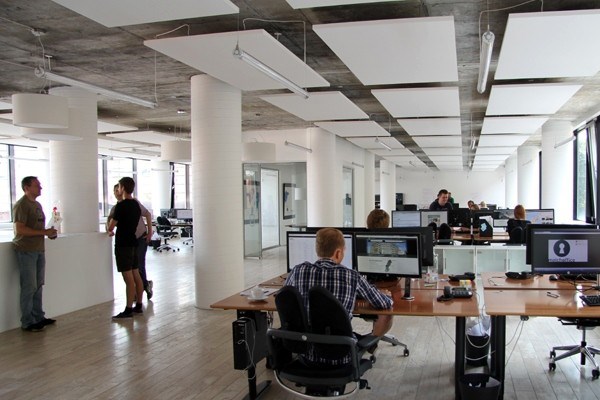
Norwegian study: Open-plan spaces and shared offices provide higher rates of sick leave

New findings from the Norwegian Working Environment Institute STAMI show that working in open-plan offices poses a 12% higher risk of sick leave, while office workers sharing space are reporting up to 18% more sick days.
The study from STAMI bases on 6,300 Norwegian office workers allowing researchers over 12 months to map their sickness absence via reports to the Norwegian Labour and Welfare Administration (NAV), which among other things, pay sickness benefit in Norway.
"The higher sickness absence affects across gender, age, job position, and education, and our results confirm similar previous studies in Sweden and Denmark.
The strength of our numbers lies in the fact that they base on sick leave over three days, which requires a medical certificate and formal reporting to NAV," department director Stein Knardahl says.
Viruses and noise
Over the past two decades, open-plan spaces and designs have gradually become the standard of the global office workplace - not least for financial reasons - where the space requirements per office worker can reduce to just ten sqm.
US studies show that over 75% of all office workplaces worldwide today are fully or partially designed as open-plan workspaces and workstations.
 Viruses, risk of infection and also noise and disturbances from the surroundings, are primary reasons for the higher sick leave in open-plan and shared office spaces, the new Norwegian study reports. |
"One of the explanations for the higher sick leave in open-plan and shared office spaces is the virus and the danger of infection. It is easier to contract a cold and flu if you sit close to colleagues. But daily noises and disturbances from the environment might hurt your concentration and mental well-being.
Noise can demotivate and disrupt the work desire of many office workers, some of whom may even be very sensitive to noise. They work most effectively in closed private workspaces," Stein Knardahl says.
25 sick days
According to the new Norwegian study from autumn 2019, employees working in private offices showed an average of 19-20 annual sick days.
In comparison, employees in open-plan spaces were on sick leave for 22 days on average, while colleagues in shared offices reported a sick absence of 25 days per year.
 According to the Norwegian survey, employees in open-plan offices had a sick leave of 22 days on average, colleagues in shared spaces reported 25 annual sick days with a medical certificate. Photo: iStock |
The Norwegian survey should urge future office designers, tenants, and others to consider whether the space-saving, cost-effective open-plan office solution also will be cheaper in the long run.
"Our study points out that shared office spaces might accommodate quite considerable long-term costs, which can, at worst, exceed the calculated savings.
At least, employers should include the risks of increased sickness absence in the calculations for their futural open-plan solutions," Stein Knardahl suggests.
 Read more:
Read more:
Stami.no: Mer sykefravær blant ansatte i åpne kontorlandskap og delte kontor
Vice.com: Does Working in an Open-Plan Office Affect Your Health?
Workplaceinsight.net: Workers remain skeptical about open-plan and shared space
Matchoffice.com: Open space offices are killing your well-being and job satisfaction



